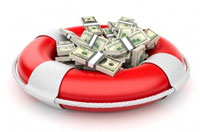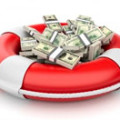Perhaps the most stressful thing about an emergency situation is that you can never quite prepare for when one will happen. Whether it’s extreme weather or an unexpected injury, emergencies occur and we have to spring into action, no matter what else is going on around us.
Although we can’t prepare for when we’ll experience an emergency situation, we can put together a kit of resources so we can react swiftly, responsibly and safely. This may seem like an expensive task, since an emergency can mean so many different things, but a basic, cost-effective kit can go a long way without breaking the bank or requiring you to invest in over-the-top, expensive products.
Life has a way of throwing the unexpected at us — and doing so often. Consider the following six tips to help you as you put together a convenient, helpful and budget-friendly emergency kit for your home.
6 Budget Friendly Emergency Preparation Tips
1) Start With the Basics
Every city’s potential emergency situation will be different, depending on if you live in Tornado Alley, hurricane country or somewhere prone to intense winter storms. Still, many of the basics you’d need to survive the aftermath would be the same.
The Red Cross has compiled a list of the must-haves, which can help you prepare your own emergency kit. Take their suggestions with a grain of salt, of course, because not every home will need all the items they suggest. Food, water and health care suggestions are great things to include in your own kit.
2) Search for Sales
Once you have an idea of what your emergency kit will need, start poring over the weekly ads from your favorite grocery and big-box stores. Unless there’s a looming weather system that has you preparing your kit, take a little bit of time to put yours together and buy as much on sale as you can. If you need to dig into your emergency kit, refill it with sale items, too, to keep your budget in check perpetually.
If you’re in a rush to build your kit, you can still save by purchasing store-brand and generic versions of products that will work just as well. Things like bandages, wound cleaner, batteries, etc., will be just as effective with or without a recognizable name selling them.
3) Don’t Skimp Too Much
The budget-friendliest options aren’t always going to build you the best emergency kit. For example, a can of condensed tomato soup might be cheaper than a can of chicken and vegetable soup, but which one will be more filling and nutritious if it’s the only thing you have to eat? Spend a little more to ensure your health and good comfort without splurging — it’s certainly possible.
This goes for larger-ticket items, too, since they won’t be cheap even if you have a coupon or find an in-store sale. Take, for example, an emergency standby generator. Purchasing one is certainly an investment, but there are so many benefits to having one. They can keep your home’s temperature steady and many electronic devices running, an especially vital service for young children and the elderly, who might need these things to survive a storm.
4) DIY Where Possible
Some emergency-prep items don’t need to be purchased from the store. Instead, you can buy the materials to make them on your own for a fraction of the cost without losing any of their function.
Storm shutters are a great example. Rather than have a professional come out and install them, you can make your own out of plywood or polycarbonate. You can DIY some of the snacks you’ll store with your emergency kit, like high-protein beef jerky. Even more simply, you can fill all of your home’s bathtubs with water before the storm hits. Then, reuse the water to rinse yourself off and to flush your toilets, just in case the water supply is cut off for a few days.
5) Bottle Your Own Water
One of the most expensive — and most vital — elements of your emergency kit will be the water you buy. Supplying enough water to get yourself and your family members through a natural disaster can get pricy, so it’s a great place to DIY.
We already covered the water you’ll use for personal hygiene, so don’t forget to fill your bathtub so you have plenty of it. Even further in advance of the storm, start bottling your own water for a safe, clean and cheap source of hydration, too.
Start by collecting previously used water containers. Fruit juice and milk containers should not be used, since they’re not built to have long shelf lives, like plastic water bottles. You can also use 5-gallon jugs that go into water coolers for an extra-large, efficient place to hold H2O. Once you have all your containers, wash their interiors with soap and water before thoroughly rinsing them.
Then, add a teaspoon of unscented bleach to a quart of water. The bleach should have sodium hypochlorite between 5.25 and 6 percent active in order to properly disinfect the container’s interior. Pour the solution into the bottle or jug, then shake it to ensure the bleach touches every part of the inside of the container. After 30 seconds, rinse the containers and let them air dry. Once that’s finished, all you have to do is fill them with potable water, seal them and put them where you can easily access them in case of an emergency.
6) Don’t Overdo It
Finally, preparation doesn’t mean you have to build a stockpile of canned goods, bottled water and batteries in your basement. Chances are, even in the face of a huge natural disaster, you would be rescued or relieved of your self-maintenance duties by the end of a week. With that in mind, stock your emergency kit to last you for about seven days, no more than that.
Every family won’t have the exact same emergency kit. Include the must-haves — water, food, power and light sources, medicine — and what your specific needs require. Clip coupons, pile everything together in a designated spot and then relax. You’re ready for whatever the world throws at you, and one day you’ll be glad you sat down and thought all this through when the weather was a bit sunnier.









